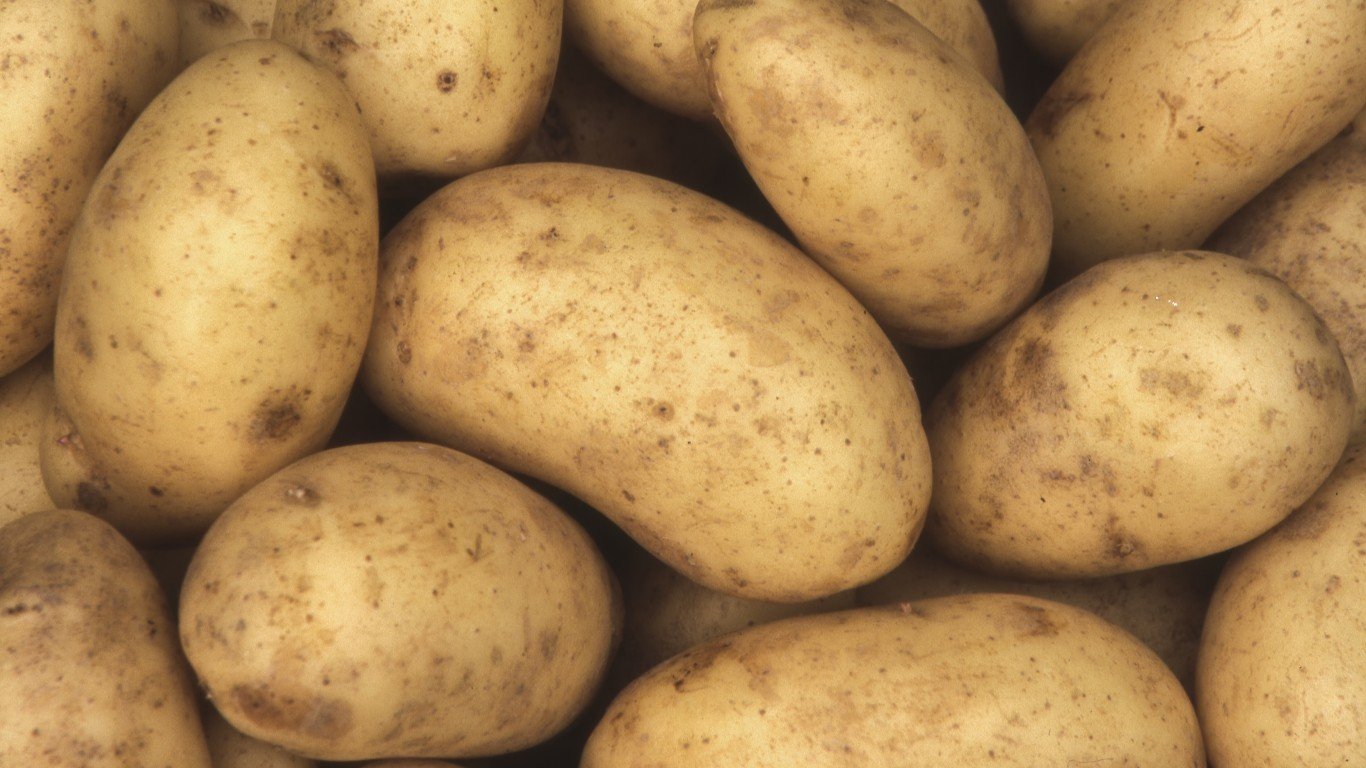
5. Potatoes
> GHG emissions in kg of CO2 equivalents per kg of food: 0.5
> GHG emissions in kg of CO2 equivalents per nutritional unit: 0.6 per 1 kg (14 lowest)
> Land use in sq meters per kg of food: 0.9 (3rd lowest)
> Freshwater withdrawal in liters per kg of food: 59.1 (8 lowest)
Americans can’t get enough potatoes! According to the U.S. Department of Agriculture, nearly 50 pounds of potatoes were available to be eaten per person in 2019. How good potatoes are for the environment is a subject of debate. One study out of England said the spuds have less environmental impact than pasta and rice. However, potatoes do use pesticides in production, so that is something to consider when munching on a french fry.
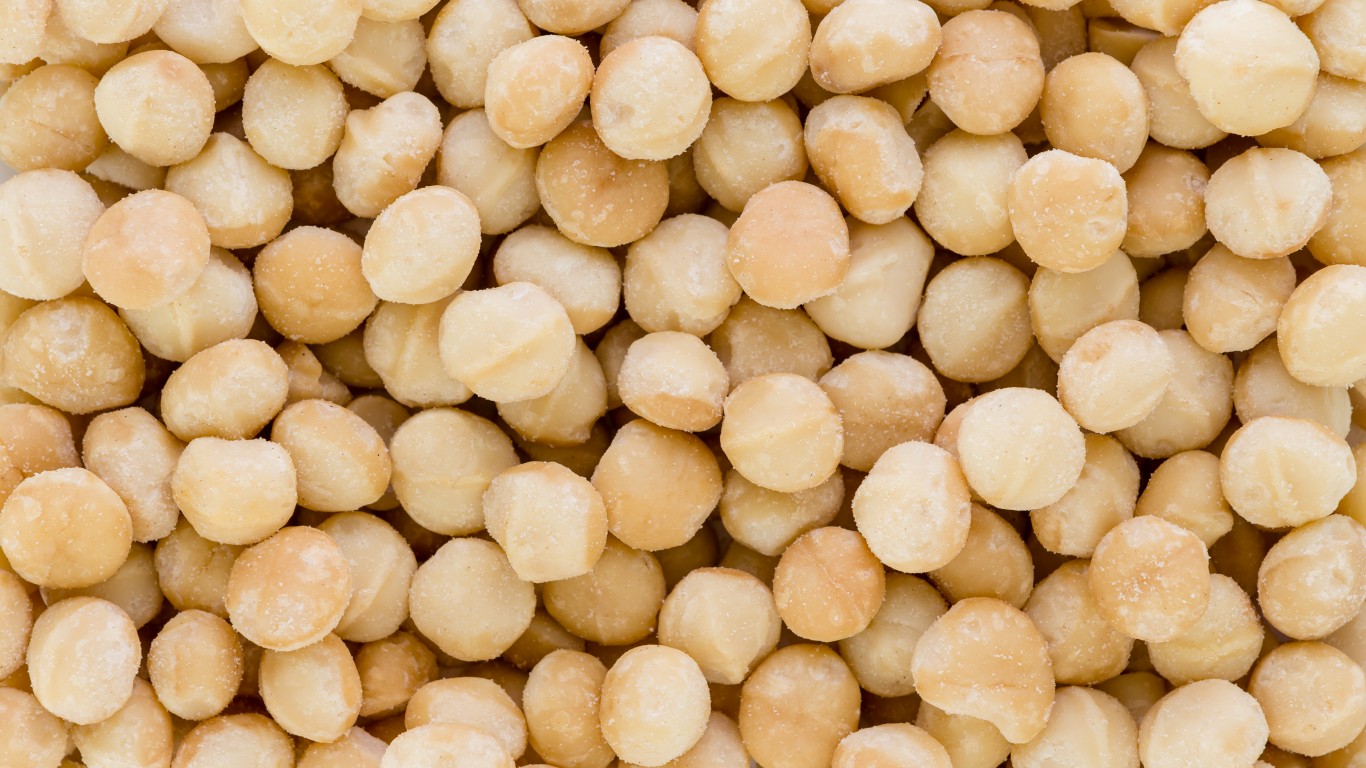
4. Nuts
> GHG emissions in kg of CO2 equivalents per kg of food: 0.4
> GHG emissions in kg of CO2 equivalents per nutritional unit: 0.3 per 100 g protein (3 lowest)
> Land use in sq meters per kg of food: 13.0 (11th highest)
> Freshwater withdrawal in liters per kg of food: 4,133.8 (2 highest)
Nuts are classified as dry, single-seeded fruits with a high oil content. Strictly, speaking, chestnuts, hazelnuts, pecans, and walnuts are nuts while peanuts are actually legumes. Packed with protein, nuts generally have a lower carbon footprint than animal-based protein. Macadamia nuts, hazelnuts, and brazil nuts are a more sustainable crop than almonds, which use a lot of water to grow.
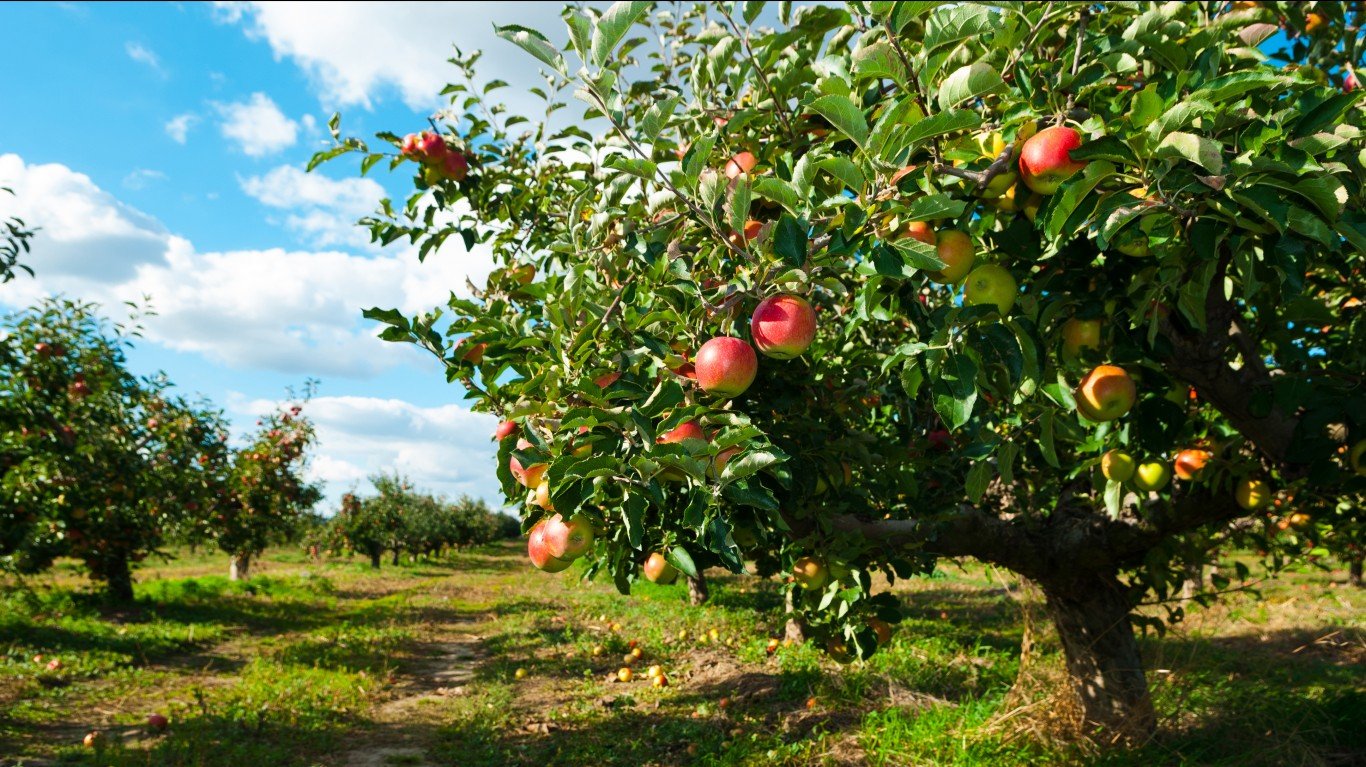
3. Apples
> GHG emissions in kg of CO2 equivalents per kg of food: 0.4
> GHG emissions in kg of CO2 equivalents per nutritional unit: 0.4 per 1 kg (8 lowest)
> Land use in sq meters per kg of food: 0.6 (1st lowest)
> Freshwater withdrawal in liters per kg of food: 180.1 (16 lowest)
Apples are vulnerable to pests, fungal infections, and bacterial diseases, so pesticides are used in their production. However, organic or “low-spray” apples are readily available today. Apples grown in the state of Washington, where drier conditions make it possible to grow them chemical-free, are another alternative.
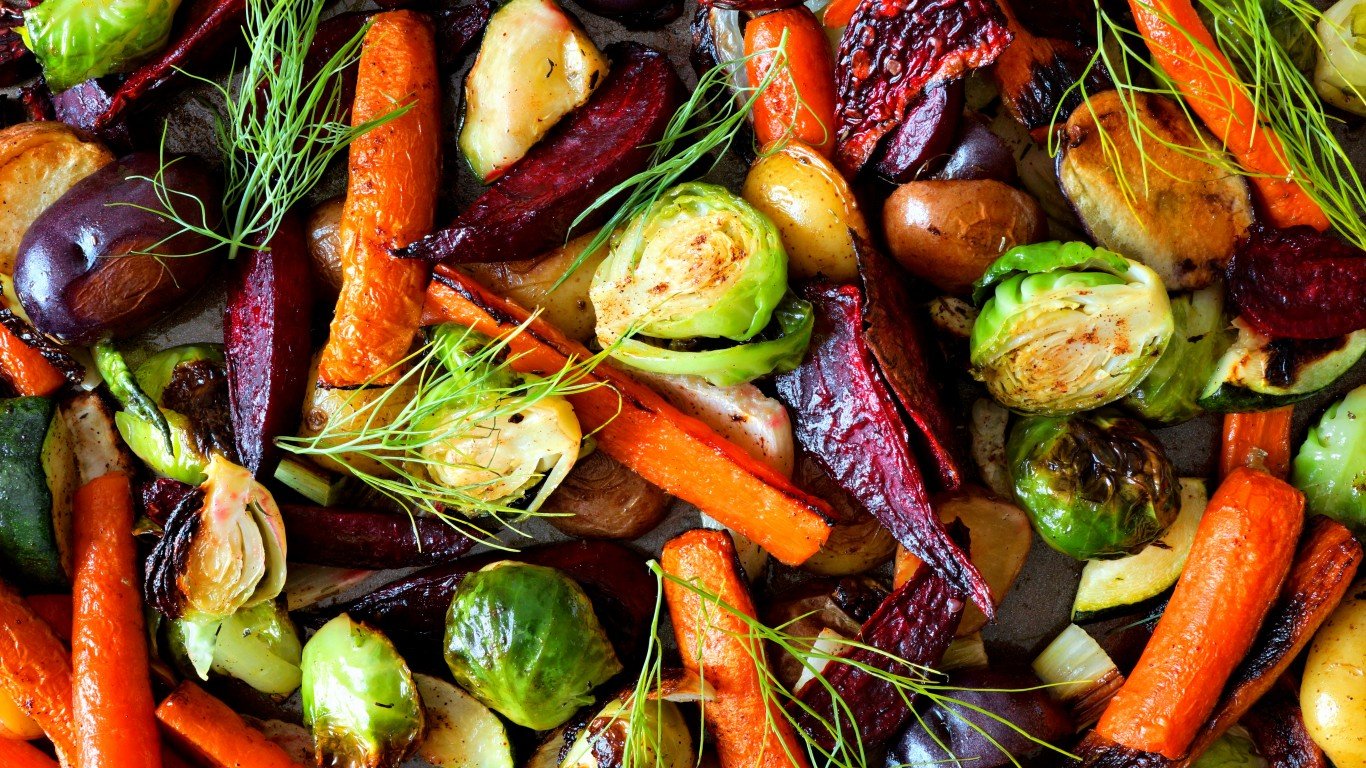
2. Root Vegetables
> GHG emissions in kg of CO2 equivalents per kg of food: 0.4
> GHG emissions in kg of CO2 equivalents per nutritional unit: 0.4 per 1 kg (8 lowest)
> Land use in sq meters per kg of food: 0.3 (9th lowest)
> Freshwater withdrawal in liters per kg of food: 28.4 (7 lowest)
Potatoes, carrots, and onions are examples of root vegetables that sprout from the earth. Root vegetables can be low in calories, but high in carbohydrates. For instance, a baked russet potato contains 37 grams of carbs compared to 12 grams in a cup of chopped raw carrots.
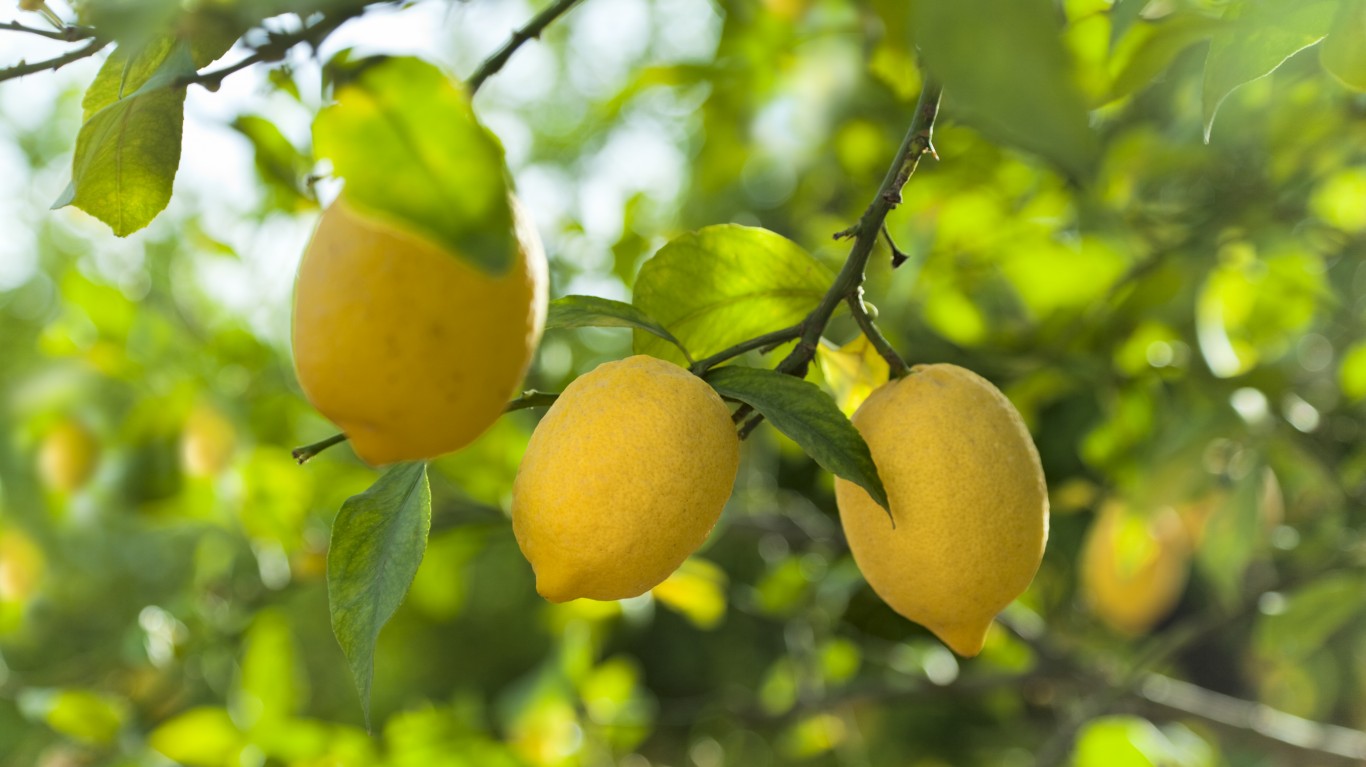
1. Citrus Fruit
> GHG emissions in kg of CO2 equivalents per kg of food: 0.4
> GHG emissions in kg of CO2 equivalents per nutritional unit: 0.4 per 1 kg (5 lowest)
> Land use in sq meters per kg of food: 0.9 (5th lowest)
> Freshwater withdrawal in liters per kg of food: 82.7 (10 lowest)
Citrus fruits can either be sweet (oranges, grapefruits) or tangy (limes, lemons). Grown on flowering trees or shrubs, citrus needs a lot of water to produce. It’s best to buy and consume citrus fruits during the peak winter season for less environmental impact.

 24/7 Tempo
24/7 Tempo




